Media | Articles
Final Parking Space: 1956 Plymouth Belvedere 4-Door Sedan
Chrysler’s Plymouth Division used the Belvedere name from the 1951 through 1970 model years, and the first to get properly exuberant tailfins was the version built for 1955 and 1956. Here’s one of those cars, found at a Denver-area self-service car graveyard recently.

Just as was the case with such Detroit machines as the Chevrolet Malibu and Ford Crown Victoria, the Belvedere name began its automotive career appended to another model name that subsequently disappeared. This was the 1951-1953 Plymouth Cranbrook, the two-door hardtop version of which was designated the Cranbrook Belvedere.

The best-known Belvederes today are the 1962-1970 B-platform midsize cars, which served as the basis for the legendary Plymouth GTX and Road Runner muscle cars. After 1970, the Satellite name—itself a former Belvedere trim-level designation—shoved the Belvedere name aside.

Chrysler’s low-priced Plymouth Division sold cars like mad after World War II ended, but Plymouth’s dowdy late-1940s body designs were hurting sales by the time future-crazed 1954 rolled around; during that year, Buick and Oldsmobile blew by Plymouth in the sales standings. For the 1955 model year, new Plymouths got the Virgil Exner “Forward Look” treatment, fins and all.

Now Plymouths looked just as modern as their Chevy or Ford rivals, and sales increased by more than 240,000 units versus 1954.
Marketplace
Buy and sell classics with confidence

Not only that, but 1955 Plymouth shoppers could opt for overhead-valve V-8 power under the hood for the first time—previously, every Plymouth since the brand’s birth had been powered by flathead straight-four or straight-six engines. Chevrolet had introduced an OHV V-8 of some importance for the 1955 model year as well, while Ford’s Y-Block V-8 had debuted the year before that.

Chrysler had been bolting its Hemi V-8 engines into high-end Chrysler-badged models since the 1951 model year, and even the DeSoto and Dodge Divisions eventually received the Hemi treatment. Lowly Plymouth, however, wasn’t about to get such a costly engine (until later on), so a cheap-to-manufacture “semi-Hemi” or “polyspherical” version with a single rocker shaft per cylinder head was devised. That engine family begat the Hy-Fire polyspherical-headed V-8, which used a different block design and eventually led to the LA-series small-block V8s that were built from the middle 1960s and into our current century.

This bubbling stew of related and not-so-related Chrysler V-8 engines gets very confusing in the 1956 model year, when new Plymouths could be purchased with either the semi-Hemi 269-cubic inch V-8 (also known as the 270) and its 180 horsepower or the A-series 276-cubic inch Poly V-8 (generally known as the 277) with 187 horses. This car has the latter type, which may be original or could be a swapped-in later version with more displacement. The A-series Poly V-8 proved to be something of an evolutionary dead end, though it was a successful engine that was installed in plenty of Chrysler machinery through 1967.

The base engine in the 1956 Belvedere remained the good old flathead straight-six, with a displacement of 230 cubic inches and an output of 125 horsepower.

The base transmission was a three-speed column-shifted manual, but this car was heavily optioned and came with the PowerFlite two-speed automatic transmission controlled by Chrysler’s new-for-1956 pushbutton shifter (the shifter, located to the left of the instrument panel, has been removed from this car).

The PowerFlite was a true automatic, unlike the earlier Fluid Drive.

This Motorola AM radio lacks markings for the CONELRAD nuclear-attack frequencies of 640 and 1240 kHz, even though they were required in 1956. Perhaps it’s an overseas-market radio.

The list price for a 1956 Belvedere four-door sedan with 269-cubic inch V-8 started at $2154, or about $25,201 in 2024 dollars. The automatic transmission added $184 to that ($2153 after inflation). A 1956 Chevrolet Bel Air sedan with 265-cubic inch V-8 and Powerglide two-speed automatic had an MSRP of $2356 ($27,564 in today’s money), while the 1956 Ford Fairlane sedan with 272-cubic inch V-8 and Ford-O-Matic three-speed automatic listed at $2409 ($28,184 now).

The Plymouth Division was named for a brand of rope popular with American farmers at the time, but later on the branding changed focus to Plymouth Rock and the Mayflower. During the middle 1950s, Plymouth logos depicted the Wampanoag people humbly presenting gifts to their future conquerors.

This car has very little serious rust for a 68-year-old car that has been sitting outdoors in Colorado for decades, though the interior has been thoroughly nuked by the harsh High Plains climate.

It could be restored, but that might not be an economically sensible choice for a fairly ordinary mid-1950s Plymouth post sedan. The more powerful Fury hardtop coupe gets most of the attention given to ’56 Plymouths these days.

This car’s final parking space is among many other interesting vehicles from the 1930s through 1970s (including the 1952 IHC L-130, 1959 Borgward Isabella Coupé, 1958 Edsel Citation, 1963 Chevrolet Corvair Monza Club Coupe, and 1963 Chrysler Newport that have appeared in this series) at Colorado Auto & Parts, located just south of Denver.

CAP is home to the famous aircraft-radial-powered 1939 Plymouth truck, which was built there by members of the family that has owned the establishment since the 1950s. If you stop by to buy some ’56 Belvedere parts, you’ll see this pickup parked next to the cashier’s counter.

Yes, it runs and drives!
***
Check out the Hagerty Media homepage so you don’t miss a single story, or better yet, bookmark it. To get our best stories delivered right to your inbox, subscribe to our newsletters.


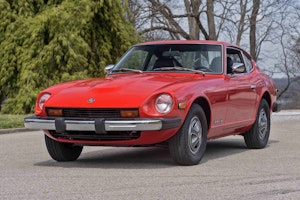
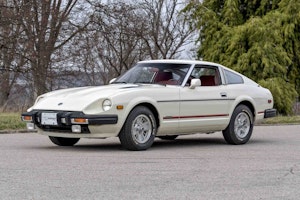
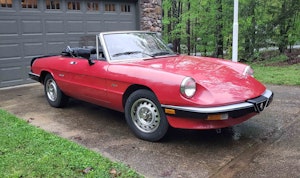

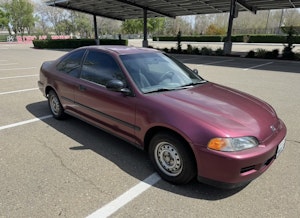
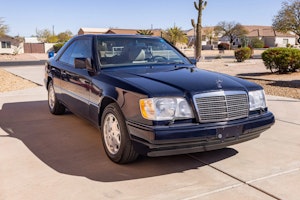




















































































Neat car. I wouldn’t mind driving this car looking just as it is. I also like the look of all-terrain or mud grip tires on the rear of cars like this (this one just has the one on the passenger rear). When I see that, it seems like a reminder that cars back then were used as more than just family car.
As a child I spent a lot of hours in the back seat of one of those 1956 Belvedere’s. It’s very nostalgic looking at these pictures and recalling scenes from my childhood. Ours had the radio delete option much to my disappointment. I don’t know which V8 engine our car had but I do remember challenging my dad one time to see if it would go to 100 MPH and he obliged and floored it till we got up to 100! I think that was in about 1963 because the car had some tranny problems not to long after that and they traded it off for a 1964 Galaxie (with an AM radio!).
The radio was most likely owner installed. Many did that because they were cheaper than factory radios.
I’m sure there were “old stock” aftermarket radios without Conelrad markings available in late ’55, early ’56 at places like Western Auto, or catalog sales like JC Whitney.
I took my drivers test in our ’56 Savoy. It had a V-8 (not sure which one, probably the smaller version) with three-on-the-tree and overdrive. My brother and I discovered the overdrive could be engaged in second gear if we wound it out enough. This was our family’s daily driver for many years, lots of fond memories……..thanks for the article. As a youngster I thought the ’56 was sorta plain looking, but I really appreciate the lines of the car now, would love to have one to drive. I now have a ’48 Special Deluxe sedan which is similar to the ’56 in many ways.
That interior, especially the back seat look sad. I see a lot of work and a tetanus shot here.
really cool and thanx for another enjoyable article. my dad drove a savoy with the same body style. i only remember it in a few pics. it was a bleached turquoise color, probably with a six or even a four if available that year. like a previous commenter, i’d thoroughly clean up the car and make the necessary mechanical repairs and drive it…oh, and a complete interior rebuild.
A friend in High School had a ’56 Savoy 2-door hardtop that was that same turquoise color. It had a swapped in 318, three speed with a J.C. Whitney floor shift kit. In a parking lot full of either Tri-Five Chevy hot rods, just-on-the-market Muscle Cars, or VW Beetles, it stood out as WAY different. Seeing the article’s photos brought back some memories (as that front end and profile are unmistakable).
The first car I remember our family having was a 56 4 door Savoy. The base version of the Belvedere. it was a nice mint green with white roof. 225 6 cylinder and 3 on the tree. No options. We traded that in for a 61 Savoy similar colours and similarly equipped. Then a 64 Savoy in metallic blue. Similar equipment and that is the car I got my license in.
Someone should send Steve Magnante to this yard to do an episode of Junkyard Gold. Hopefully he makes a full recovery, I know he’s still far from 100%.
I went to sunday school in the neighbor’s 55 Plymouth. I remember the daughters and the Plymouth.
I love looking at these cars I’m 71 yrs old I haven’t seen some others cars in a long time
Thank you for the walk down memory lane